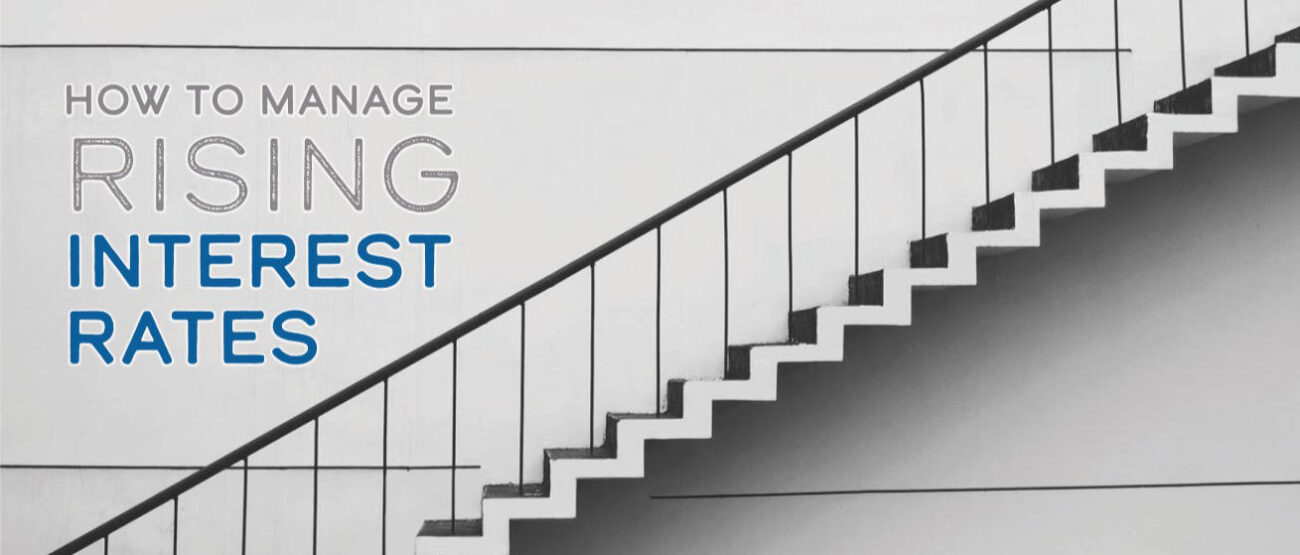
June has arrived and so has winter, as the financial year draws to a close. Now that the federal election is out of the way, it’s time to focus on planning for the future with more certainty.
Cost of living pressures, inflation and interest rates were major concerns in the lead-up to the May federal election. The Reserve Bank of Australia (RBA) lifted the cash rate for the first time in over 11 years from 0.1% to 0.35%, as inflation hit 5.1%. This followed the US Federal Reserve’s decision to lift rates by 50 basis points to 0.75-1.00%, the biggest rate hike in 22 years as inflation hit 8.5%. Global pressures are largely to blame, from war in Ukraine and rising oil prices to supply chain disruptions and food shortages. The price of Brent Crude surged a further 27% in May.
As a result, the BA has cut its growth forecast for the year to June from 5% to 3.5% and raised its inflation forecast from 3.25% to 4.5%. On the ground, the economic news is mixed. New business investment fell 0.3% in the March quarter but still rose 4.5% on the year. The NAB business confidence index fell from +16.3 point to +9,9 points in April, still above its long-term average. Adding to inflationary pressures, labour and materials shortages and bad weather saw building costs rise 2.8% in the March quarter, while retail trade rose further in April to be up 9.6% over the year.
On the positive side, unemployment fell further from 4% to 3.9% in April, the lowest rate since 1974, while annual wages growth rose slightly in the March quarter from 2.3% to 2.4%, still well below inflation.

Rising interest rates are almost always portrayed as bad news, by the media and by politicians of all persuasions. But a rise in rates cuts both ways.
Higher interest rates are a worry for people with home loans and borrowers generally. But they are good news for older Australians who depend on income from bank deposits and young people trying to save for a deposit on their first home.
Rising interest rates are also a sign of a growing economy, which creates jobs and provides the income people need to pay the mortgage and other bills. By lifting interest rates, the Reserve Bank hopes to keep a lid on inflation and rising prices. Yes, it’s complicated.
How high will rates go?
In early May, the Reserve Bank lifted the official cash rate from its historic low of 0.1 per cent to a still low 0.35 per cent. The reason the cash rate is watched so closely is that it flows through to mortgages and other lending rates in the economy.
To tackle the rising cost of living, the Reserve Bank expects to lift the cash rate further, to around 2.5 per cent.’ Inflation. is currently running at 5.1 per cent, which means annual wages growth of 2.4 per cent is not keeping pace with rising prices.”
So what does this mean for household budgets?
Mortgage rates on the rise
The people most affected by rising rates are likely those who recently bought their first home. In a double whammy, after several years of booming house prices the average mortgage has also increased.
According to CoreLogic, even though price growth is slowing, the median home value rose 16.7 per cent nationally in the year to April to $748 635. Prices are higher in Sydney, Canberra and Melbourne.
CoreLogic estimates a 1 per cent rise would add $486 a month to repayments on the median new home loan in Sydney, and an additional $1.006 a month for a 2 per cent rise. The big four banks have already passed on the Reserve Bank’s 0.25 per cent increase in the cash rate in full to their standard variable mortgage rates which range from 4.6 to 4.8 per cent. The lowest standard variable rates from smaller lenders are below 2 per cent.
Still, it’s believed most homeowners should be able to absorb a 2 per cent rise in their repayments.
The financial regulator, APRA now insists all lenders apply three percentage points on top of their headline borrowing rate, as a stress test on the amount you can borrow (up from 2.5 per cent prior to October 2021).
Rate rise action plan
Whatever your circumstances, the shift from a low interest rate, low inflation economic environment to rising rates and inflation is a signal that it’s time to revisit some of your financial assumptions.
The first thing you need to do is update your budget to factor in higher loan repayments and the rising cost of essential items such as food, fuel, power, childcare, health and insurances. You could then look for easy cuts from your non-essential spending on things like regular takeaways, eating out and streaming services.
If you have a home loan, then potentially the biggest saving involves absolutely no sacrifice to your lifestyle. Simply pick up the phone and ask your lender to give you a better deal. Banks all offer lower rates to new customers than they do to existing customers, but you can often negotiate a lower rate simply by asking.
If your bank won’t budge, then consider switching lenders. Just the mention of switching can often land you a better rate with your existing lender.
The challenge for savers
Older Australians and young savers face a tougher task. Bank savings rates are generally non-negotiable, but it does pay to shop around.
By mid-May only three of the big four banks had increased rates for savings accounts. Several lenders also announced increased rates for term deposits of up to 0.6 per cent.”
High interest rates traditionally put a dampener on returns from shares and property, so commentators are warning investors to prepare for lower returns from these investments and superannuation.
That makes it more important than ever to ensure you are getting the best return on your savings and not paying more than necessary on your loans. If you would like to discuss a budgeting and savings plan, give us a call.
https://www.rba.gov.au/speeches/2022/sp-gov-2022-05-03-q-and-a-transcript.html
https://www.abs.gov.au/
https://www.canstar.com.au/home-loans/banks-respond-cash-rate-Increase/
https://www.apra.gov.au/news-and-publications/apra-increases-banks%E2%80%99-loan-serviceablity-expectations-to-counter-rising
https://www.ratecity.com.au/tern-deposits/news/banks-increased-term-deposit-interest-rates

As the end of the financial year approaches, now is a good time to check your super and see what you could do to boost your retirement nest egg. What’s more, you could potentially reduce your tax bill at the same time.
There are a handful of positive changes to super due to start next financial year, but for most people, these will not impact what you do before June 30 this year.
Changes ahead
Among the changes from 1 July, the superannuation guarantee (SG) will rise from the current 10 per cent to 10.5 per cent.
Another upcoming change is the abolition of the work test for retirees aged 67 to 74 who wish to make non- concessional (after tax) contributions into their super. This will allow eligible older Australians to top up their super even if they are fully retired. Currently you must satisfy the work test or work test exemption. This means working at least 40 hours during a consecutive 30-day period in the year in which the contribution is made.
But remember you still need to comply with the work test for contributions you make this financial year.
Also on the plus side, is the expansion of the downsizer contribution scheme. From 1 July the age to qualify for the scheme will be lowered from 65 to 60, although other details of the scheme will be unchanged. If you sell your home that you have owned for at least 10 years to downsize, you may be eligible to make a one-off contribution of up to $300,000 to your super (up to $600,000 for couples). This is in addition to the usual contribution caps.
Key strategies
While all these changes are positive and something to look forward to, there are still plenty of opportunities to boost your retirement savings before June 30.
For those who have surplus cash languishing in a bank account or who may have come into a windfall, consider taking full advantage of your super contribution caps.
The annual concessional (tax deductible) Cap is currently $27,500. This includes your employer’s SG contributions, any salary sacrifice contributions you have made during the year and personal contributions for which you plan to claim a tax deduction.
Claiming a tax deduction is generally most effective if your marginal tax rate is greater than the 15 per cent tax rate that applies to super contributions. It is also handy if you have made a capital gain on the sale of an investment asset outside super as the tax deduction can offset any capital gains liability.
Even if you have reached your annual concessional contributions limit, you may be able to carry forward any unused cap amounts from previous years if your super balance is less than $500,000.
Once you have used up your concessional contributions cap, you can still make after-tax non-concessional contributions. The annual limit for these contributions is $110,000 but you can potentially contribute up to $330,000 using the bring-forward rule. The rules can be complex, especially if you already have a relatively high super balance, so it’s best to seek advice.
Government and spouse contributions
Lower income earners also have incentives to put more into super. The government’s co-contribution scheme is aimed at low to middle income earners
who earn at least 10 per cent of their income from employment or business.
If your income is less than $41,112 a year, the government will contribute 50c for every after-tax dollar you squirrel away in super up to a maximum co- contribution of $500. Where else can you get a 50 per cent immediate return on an investment? If you earn between $41,112 and $56,112 you can still benefit but the co-contribution is progressively reduced.
There are also incentives for couples where one is on a much lower income to even the super playing field. If you earn significantly more than your partner, ask us about splitting some of your previous super contributions with them.
Also, if your spouse (or de facto partner) earns less than $37,000 a year, you may be eligible to contribute up to $3000 to their super and claim an 18 per cent tax offset worth up to $540. If they earn between $37,000 and $40,000 you may still benefit but the tax offset is progressively reduced.
As it can take your super fund a few days to process your contributions, don’t wait -until the very last minute. If you would like to discuss your super options, call now.

Retirement means starting a new chapter of your life, one that gives you the freedom to create your own story, as you decide exactly how you want to spend your time. While retirement may not be part of your immediate plans, there are advantages to giving some thought as to what retirement looks like for you and how to best position yourself, well before you leave the workforce behind.
A time of profound change
Even setting aside the huge financial implications of leaving a regular salary behind, retiring from work represents one of the biggest life changes you can experience.
For most people, the freedom of being able to do, whenever you want to do it, is pretty enticing. However, it is quite common to have mixed feelings about retiring, particularly as you get closer to retirement. What we do for a living often defines us to some extent and leaving your job can mean a struggle with how you perceive yourself as well as how others view you. Coupled with the desire for financial security in retirement and the need to make your retirement savings last the distance, you have a lot to be dealing with.
So, let’s look at the things you need to be thinking about sooner rather than later, from an emotional and practical perspective, to ensure your retirement is everything you want it to be.
Forge your own path
Don’t be tied to preconceptions of what retirement is all about. Retirement has evolved from making a grand departure from the workplace with the gift of a gold watch to a more flexible transition that may unfold over several years. Equally, if the idea of a clean break appeals to you then that’s okay too and you just need to plan accordingly.
The same applies for your timeframe for retirement. The idea that you ‘have’ to retire at a certain age is no longer relevant given advances in healthcare and longer lifespans. If work makes you happy and fulfilled, then it can make sense to delay your departure from the workforce.
Planning how to spend your time
It sounds obvious but you’ll have more time on your hands so it’s important to think about what you want to devote that time to. A study found that 97 per cent of retirees with a strong sense of purpose were generally happy and satisfied in retirement, compared with 76 per cent without that sense. Think about what gives your life meaning and purpose and weave those elements into your plans.
If you are part of a couple, it’s critical to ensure that you are both on the same page about what retirement means to you. This calls for open and honest communication about what you both want and may also involve some degree of compromise as you work together to come up with a plan that meets both of your needs.
Practical considerations
There’s a myriad of practical considerations once you have started to plan how you’ll spend your time.
Here are a few things you may wish to consider:
- Where do you want to live? Do you want to be close to a city or are you interested in living in a more coastal or rural area? Are you wanting to travel or live overseas for extended periods?
- What infrastructure and health services might you need as you age? Are these services adequate and accessible in the area you are thinking of living in?
- What hobbies and activities do you want to be involved in. Do you need to start developing networks for those activities in advance?
- Who do you want to spend time with? If you have children and grandchildren, think about what role you’d like to play in their lives upon retirement.
The best laid plans…
Of course, with all this planning it’s also important to acknowledge that the best laid plans can go astray due to factors beyond your control. It’s important to keep an open mind and be adaptable. While redundancy or poor health can play havoc with retirement dreams, it’s still possible to make the best of what life throws at you.
And of course, we are here to help you with the financial side of things to ensure that retirement is not only something to look forward to, but a wonderful chapter of your life once you start to live out your retirement dreams.


